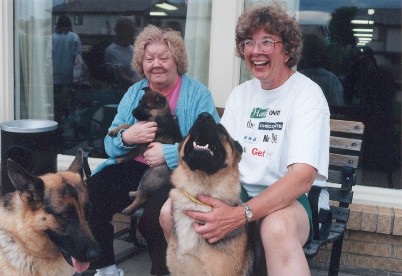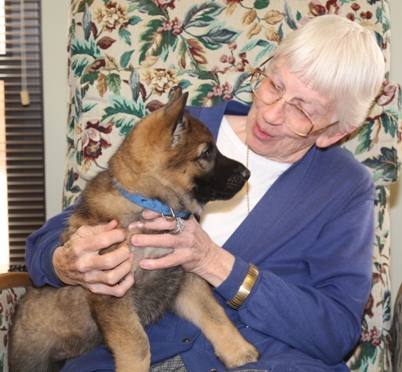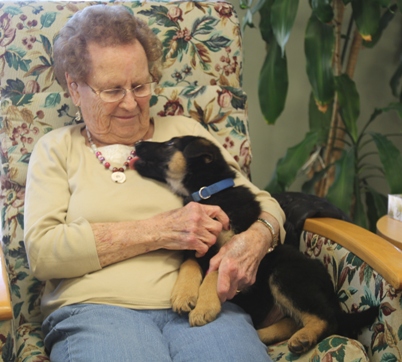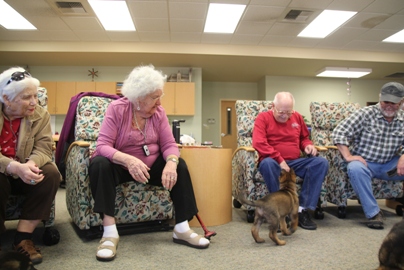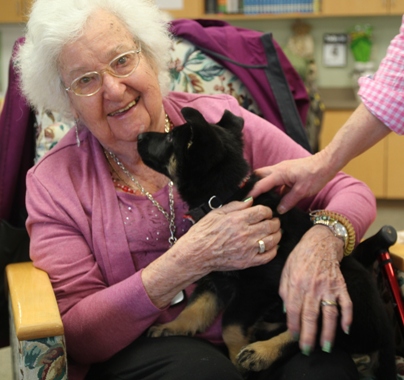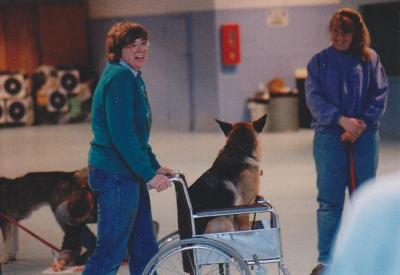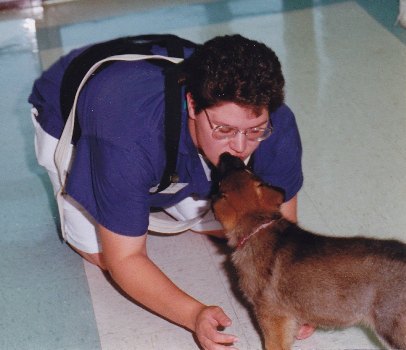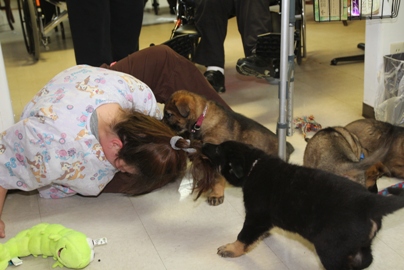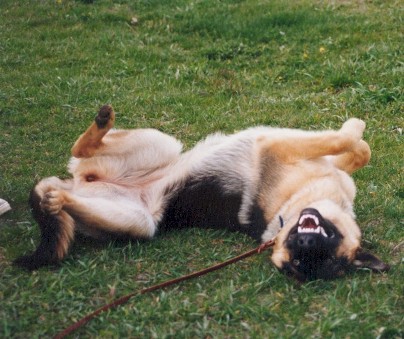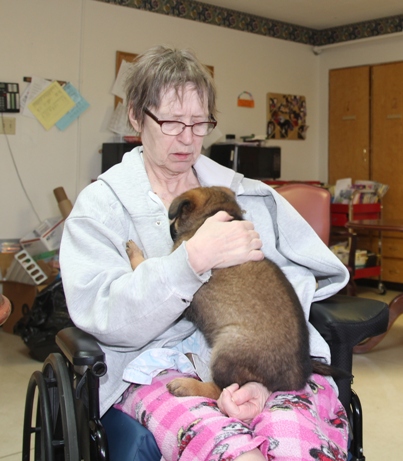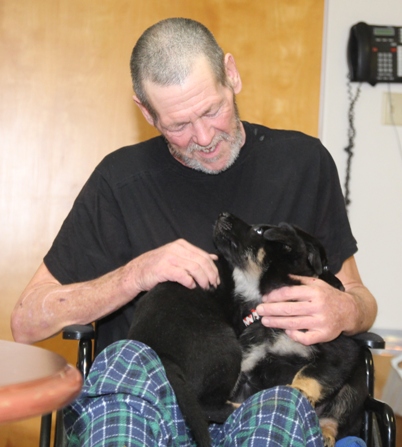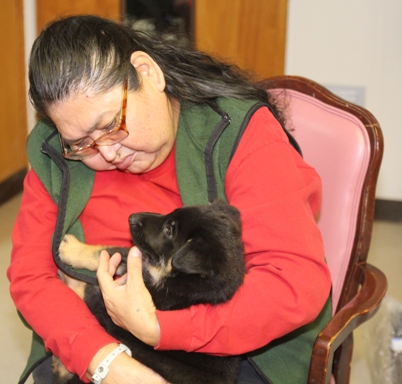THERAPY DOGS
https://celhaus.com/other-gsd-activities/therapy-dogs/
Currently, we do Reading Dog at Tongue River Elementary School in Ranchester, WY, and Holy Name School in Sheridan, WY.
Here are some recent therapy dog pages on my website:
2024 Reading Dog News: https://celhaus.com/therapy-dogs/2024-reading-dog-news/
2023 Reading Dog News: https://celhaus.com/therapy-dogs/2023-reading-dog-news/
https://celhaus.com/our-family/berakah-reading-dog-at-tre-february-2020/
https://celhaus.com/our-family/berakah-therapy-dog-for-children/
https://celhaus.com/our-family/berakah-museum-therapy-dog/
https://celhaus.com/our-family/cantor-therapy-dog-childrens-library/
https://celhaus.com/glory-too-at-reading-dog-may-2021/
https://celhaus.com/our-family/lovely-reading-dog-at-tre-february-2020/
https://celhaus.com/lovely-at-reading-dog-may-2021/
https://celhaus.com/reading-dogs-at-tre-may-2021/
https://celhaus.com/our-family/therapy-dog-reading-program-at-library/
https://celhaus.com/other-gsd-activities/therapy-dog-visits-during-pandemic/
https://celhaus.com/other-gsd-activities/therapy-dogs/
The therapy dogs who do Reading Dogs have their own trading cards. Kids get a card every time they read to the dog or write it a letter (to which the dog replies):
Spirit’s Trading Cards https://celhaus.com/spirits-trading-cards/
Lovely’s trading cards: https://celhaus.com/lovelys-trading-cards/
Hopeful’s Trading Cards: https://celhaus.com/therapy-dogs/hopefuls-trading-cards/
GloryToo’s trading cards: https://celhaus.com/glorytoos-trading-cards/
Berakah’s trading cards (first ones we did): https://celhaus.com/berakahs-trading-cards/
Doing Therapy Dog Visits During the 2020 Pandemic
January 2020: I normally do a therapy dog visit to the enclosed Alzheimer’s Unit at one nursing home every Thursday, but the entire nursing home is shut down due to an Influenza A outbreak. In fact, one of my favorite residents was so sick he had to go to the hospital. Last Thursday I texted the attendant in the unit about the time I would have been leaving home to go do the visit and asked her to tell all the residents that Lively & I missed being able to see them. (It was Lively’s turn to be their therapy dog.) She texted me back that one of them, at exactly 2 p.m. (time for my visit) began saying over and over again, “Where is my dog? WHERE is my dog? Where is MY dog?” and finally sat in a chair where she could watch the doors to catch sight as soon as we came into the Unit.
A while back the people at Chewy.com (where I got my dog food for years) sent me 4” x 4” paintings of all 9 of my dogs, on canvas stretched over wood frames. I don’t have room to hang things at home so hadn’t figured out what I could do with them, but Monday I got the brainstorm to write get-well messages on the backs and sign each dog’s name, and take them, with a get-well card, to the unit. I thought they were the perfect size for the residents to hold and enjoy and talk about since the live dogs couldn’t go. I gave them to a staff member at the nursing home door and asked them to take them into the Unit since I couldn’t go inside. My contact in the Unit texted me a little while later saying the residents absolutely loved them. Still later she texted that the residents had insisted they be hung on a certain place on the wall, by the painting of her German Shepherd that she had donated when she started working there and learned how they loved my German Shepherds’ visits. She even sent a photo. It’s so hard on the Alzheimer’s patients when they’re sick and their usual routine is all disrupted so hopefully that cheered them up. And they’re so fragile – have lost so much – that I’ve really bonded to them and my dogs seem to have, too. We made big posters – two, 14” x 18”, per dog, with photos and info about them, what they like, compete in, etc., and the staff posts them the morning of our visit so the residents know who to look for that afternoon.
December 2019: In their Christmas card, the owners of one of my PP litter included this poem they had written, which I just had to add to this page.
Cel and her Kids
There is a lady named Cel
To her Shepherds she’s a big deal
But even greater to all
Whether the big or the small
Special pleasure she gives
When visiting with her kids
The different locations
Schools, infirmed and the aging
Happy thoughts throughout
With Shepherds have no doubt
Whose unending devotion
Keeping life in full motion
Enlightening all the hearts
Is the big gift Cel imparts!
Thanks, John & Julie, for those beautiful thoughts.
***
The photos of my adult therapy dogs are old, taken by a photographer friend who is now dead. Most of the puppy photos are newer. I take photos when we visit and give CD’s of all the photos to the institutions so they can share them with their residents.
A visit to a nursing home with Glory (left), Bless (laughing) & Ashi (5 weeks)
The following are quotes from an excellent book, Volunteering with Your Pet. by Mary R. Burch, Ph.D.
In 900 BC Homer wrote about the god of healing, who used a sacred dog to accomplish the healing of people.
In the 1790’s at York Hospital, Yorkshire, England, a treatment center for people with mental illness, the Quakers utilized Pet Assisted Therapy.
In 1859 Florence Nightingale wrote that a small pet is an excellent companion for the sick.
In 1919 animals were used in St. Elizabeth Hospital, Washington, C.D., for men with mental problems.
In the 1940’s the Red Cross, working with people with war injuries, had them work on a farm, with animals, to help them forget and recover from their injuries.
Also in the 1940’s, a Yorkshire Terrier named Smoky becamse famous as a therapy dog serving soldiers during World War II
(details below)
In the 1950’s, clinical psychologist Dr. Boris Levinson, at Yeshiva University in NY, had his dog, Jingles, attend therapy sessions with a disturbed child.
Various organizations exist to foster pet assisted therapy. Therapy Dogs International was founded in 1976. Therapy Dogs Incorporated (now Alliance of Therapy Dogs) was founded in 1990.
Jack Butrick, co-founder of Therapy Dogs Incorporated (now Alliance of Therapy Dogs), was using animals to teach measurable goals and objectives (commonplace now but unheard of then), when most people were excited about simply visiting with animals.
I use all of my dogs as Therapy Dogs. In fact, in the 1980’s, I was the first person in Wyoming with a Therapy Dog. I still visit frequently, Most Mondays at one nursing home; Wednesdays and Fridays at the other; twice a month at Green House Living. When I have a litter of puppies I take them as a group, from 5 weeks until they go to their new homes, to nursing homes and the school where we do Reading Dog, and we also do a puppy playtime at the Children’s Library.
42-day old puppies visiting at a nursing home
49-day-old puppies visiting the senior daycare
The library visit is a hoot: they invite all the young children who frequent the library to come for puppy playtime. This started when we began the Reading Dog program, where children sign up for times to come read to a therapy dog on Monday, Wednesday and Friday afternoons (Monday, a standard poodle and Wednesday, a Chihuahua). Once the children’s librarian got to know me and my dogs, she asked me to bring my litters in and it’s very popular with children and their moms. When I keep a pup for myself, she makes regular “walk through” visits so that the residents can see her growing up. Pups don’t sit still for regular visits until they’re about a year old (one reason they can’t be certified as Therapy Dogs until that age), but they enjoy about a 30-minute walk through the institution, accepting treats, performing any tricks they’ve learned, and generally showing off.
Puppy Playtime at the Children’s Library
Don’t miss photos of my adult dogs doing Reading Dog at the Children’s Library: All and special ones of Berakah.
I regularly certify new therapy dog teams.
Glory helping at a screening of prospective therapy dog teams.
I have been called by activity directors who need me to make a special “spur of the moment” visit, especially to the Alzheimer’s unit. When the residents respond to nothing else, they always will interact with the dogs. That can be one of the most rewarding parts of this volunteer activity. Over the years we have made quite a few good friends who look forward to our visits and ask for the latest funny story about their antics. The residents know all my dogs by name and which dog enjoys what activity, but they seldom remember my name or recognize me if I appear at the nursing home without a dog!
All my dogs take turns doing Therapy Dog visits and get excited when they see the special collar and leash. They begin to “sing” as soon as we take the turn which leads to the nursing home. Glory enjoyed riding in a wheelchair during our visits. She loved people’s double takes and the ensuing admiration and adulation showered upon her as she sat proudly upon her “throne”. She also enjoyed being on a perfect level to be petted by residents in their own wheelchairs.
Glory visiting at a nursing home.
One time I was invited to bring a Therapy Dog to visit a class at the Wyoming Girls School. The Girls School is our state institution for girls, 12 to 18 years old, who have gotten in trouble with the law and have been committed to the Girls’ School by a judge. They’re given a highly structured environment, all kinds of counseling and other activities to help them go straight. The class I visited had been studying how animals help people, and the teachers asked me to give a live demonstration of Therapy Dog work. Many of the teens are at the Girls School because of abuse of lack of supervision (pretty much running wild). These girls were mesmerized by our visit, asked lots of questions, told me about their dogs at home, and were particularly interested in what makes a good Therapy Dog. It was good to see them acting like normal kids. I took Glory and Jubilee, who was then 6 months old, so they could see an experienced Therapy Dog as well as learn how to socialize puppies so that they will grow up to be good Therapy Dogs. We charmed the group. Glory loved to “work a group” and proceeded to get down to business, giving kisses, striking her irresistible pose (on back, head curved to expose mouth making a big smile), riding in a revolving office chair, and so forth. Jubilee didn’t have quite the experience her mother does, but she visited with everyone and even learned to get into that strangely moving chair! All of us humans sat on the floor and laughed and talked about why people in institutions need animals to visit them so that they, too, can enjoy the fabulous gifts living creatures give to us. Therapy Dogs definitely enrich the lives of caregivers as well as residents.
Ashi (5 weeks) visiting one of the nurses in the Alzheimer’s Unit; 46 day-old pups clowning with the activity director at a nursing home visit
The girls enjoyed our visit so much that they asked to accompany me on Therapy Dog visits. One of the nursing homes is close to the Girl’s School, so for months I took a girl with me each time I went there. This was a double blessing for both groups–an opportunity for the girls to “give” love to others and see the beauty of the elderly, and a new, pretty, young face to cheer up someone for whom time often drags heavily. This particular nursing home has a daycare center, which was always our last stop. The teens really enjoyed seeing the dog disappear under hugging arms and kissing faces of 2 to 12 little ones.
For, perhaps, if the truth were known, we’re all a little blind, a little deaf, a little handicapped, a little lonely, a little less than perfect. And if we learn to appreciate and utilize the dog’s full potentials, we will, together, make it in this life on earth.
Charlotte Schwartz, Friend to Friend–Dogs That Help Mankind
I helped establish a Therapy Dog unit as part of our 4H dog program. For years we took the kids and their dogs on a monthly visit to each nursing home. Two of us dog leaders were Tester/Observers for Therapy Dogs Incorporated (now Alliance of Therapy Dogs). After the kids completed the first-year course, we would invite those whose dogs we thought would make good Therapy Dogs, to go through the certification process. Certification involves one screening session and three supervised visits to the nursing homes, after which we approved the teams and invited them to send the paperwork to Therapy Dogs Incorporated. Once TDInc. had approved them as members and sent their “badge”, a special red heart to wear on visits, they could join us on visits. The screening session establishes that the dog has the good, steady temperament needed for this work, that the owner has the dog under control and can keep both the dog and residents safe on visits, and that the dog enjoys being petted by strangers. It also establishes that the dogs are up to date on immunizations and are clean and parasite free. The supervised visits allow us to discern that the dog is comfortable around the smells, sounds, erratic behavior and movement of residents, and that the handler is attentive enough to help the dog in all those encounters. It is always exciting to see a dog realize what we’re there for and begin initiating contact with each resident.
What type of dog makes a good Therapy Dog? The breed doesn’t make nearly as much difference as some would think. The personality of the individual is the key. We have certified a great variety of breeds here in Sheridan: West Highland White, Great Pyrenees, Yorkshire Terrier, Border Collie, Lab, Springer Spaniel, Rottweiler, Miniature Pinscher, Bassett, Bull Terrier, Borzoi, Australian Shepherd, Dalmatian, Weirmaraner, Chihuahua, Doberman, Sheltie, Poodle, Schnauzer, many mixed breeds, and of course my German Shepherds. Some dogs are more outgoing with strangers in the beginning, but all become soon excited about their “work”.
Glory demonstrating her irresistible pose.
My German Shepherds are usually more interested in pleasing me than in the residents at first, but soon the light dawns and they realize the strangers ARE the work. They become very serious and focused upon the residents and soon seem to know who needs extra time on a particular visit. Sometimes they zero in on a particularly unresponsive, autistic resident and gently place their heads under the person’s hand until they notice and begin gently stroking; sometimes they just snuggle and keep body contact as if trying to offer comfort. Mine often like to lie at the person’s feet and rest their chin gently on the foot, letting them know they can pet or not as they choose. Bless particularly liked to hold hands. Glory did her irresistible pose. All the “kids” enjoy having the residents toss treats for them to catch (I always bring treats for this!). Droll leaned lovingly into the wheelchair and stared at them lovingly, or collapsed and invited them to rub his belly (he said it’s too much work to catch treats).
Research has documented what all animal lovers know instinctively: animals are good for our health. the unconditional love offered by an animal reaches deep into a suffering and lonely heart. The motto of Therapy Dogs Incorporated (now Alliance of Therapy Dogs) is quite appropriate: “Change Tears into Smiles! Help the Forgotten To Laugh.” Some residents tell me the same stories about dogs they loved each time I visit, bringing to mind good memories which warm them long after I leave. The residents know when we enter the home and often come looking for us, impatient to visit, gathering in the hallway outside the room we happen to be in, listening to and joining into that conversation and continuing it when we emerge into the hall. After we’ve moved on, they often compare notes on my stories and begin to share their own animal stories. Many enjoy feeding the dogs. I always bring treats, but some residents keep stashes–cookies, crackers, candy–in their rooms for the dogs (but seldom for me!).
In the small town where I live, nursing homes were the only institutions using Therapy Dogs for years. Now the hospital welcomes them and several teams visit regularly. I don’t because of my work schedule, but the others are a big hit. I have been called to visit the Homeless Shelter when they have a family in residence. I have also worked with schools and in a summer program for troubled children. In larger areas, Therapy Dogs often visit children’s units, cancer wards, special care facilities and other places where hurting people are. This is a very rewarding activity to do with your dog. If you are interested in further information you can contact one of the groups listed below. You can also e-mail me at celhaus@vcn.com. On the Alliance of Therapy Dogs website, you can enter your zip code and they’ll give you names and phone numbers of the tester/observer(s) in your area.
46-day-old pups visiting the other local nursing home
Alliance of Therapy Dogs, P. O. Box 5868, Cheyenne, WY 82003 E-Mail: office@therapydogs.com
Website: therapydogs.com
Links to Therapy Dog pages:
Delta Society https://petsforum.com/deltasociety/dsa000.htm
https://www.rehabnet.com/aft/index.html
Smoky, the first Therapy Dog of record:
I received this note from Smoky’s owner, Bill Wynne, who also sent me a copy of his book:
“I thought perhaps you might include Smoky, a four pound Yorkie who went through WWII with me in your history as she is the first Therapy Dog of record. (Animal Planet research) Here are a couple of references including the Mayo Clinic story about Smoky in Nadzab New Guinea in July of 1944.
We did three more Military Hospitals at the invitation of American Red Cross worker Barbara Wood Smith, Aug 1944, the 109th fleet Hospital ( Navy and Marine) and the 42nd General Army Hospital both in Brisbane Australia. 12 wards a day. Wounds did not heal in the tropics so those injured were sent south to Australia. Amputees in wheel chairs followed us ward to ward and each wanted to transport Smoky in their wheel chairs. Then Ms. Wood Smith invited us to come to Manila to serve at the 120th General Hospital while the outskirts of the City was under still under siege. I was in Lingayen Gulf 80 miles away.
Two photos appear in my book, “Yorkie Doodle Dandy A memoir,” one photo at the Manila Hospital and another at Great Lakes Naval Training Base Hospital in Chicago. 1946. There is also a Paramount News Reel.
Smoky recently received a Hero’s award in the UK. She has six memorials nationally. A memorial for Smoky is underway in Australia to be dedicated in Summer 2012 at the Royal Brisbane and Women’s Hospital on the site of one of the U.S. military Hospitals where Smoky served in 1944.”
Bill Wynne has had dogs all his life. Having had six lessons in Obedience training in Cleveland in 1942 his experience when he obtained Smoky, a four pound Yorkie, in New Guinea in W.W.II was indeed limited. The basic obedience commands with the bright Smoky were accomplished in two days off the leash with the tiny dog, who was no taller than the top of Bill’s GI shoes. She worked to near perfection. Together, the two worked by trial and error. Soon Smoky was playing dead, running between Bill’s legs as he walked along. She learned to walk on a drum and peddle a scooter made of an orange crate, and control cable pulleys for wheels from a P-38. Using airplane scrap control wires mounted on a wood frame, Smoky was soon walking on a tight wire blindfolded.
The ultimate trick was spelling her name out of letters by actual recognition, no matter how they were placed. The letters were cut from empty, 16″ by 20″ cardboard boxes, used for holding photographic paper. The scooter and letters fit in the cut-down, photo-chemical drum. For carrying in Bill’s barracks bag when they were advancing in the island-hopping toward Japan.
They performed for their buddies and at Army and Navy Hospitals. Many of these tricks are used today in Agility trials. For example in Agility dogs weave through pickets, and run through a flexible tunnel. Sixty Years ago Smoky climbed ladders and went down them or slid down a sliding board. Smoky and Bill were in show business for 10 years after the war doing the tricks Smoky learned overseas, all set to music. Bill worked In Hollywood for a short time after the war, training and handling dogs in major studios.
Bill is retired after 50 years of professional photography. After his experience in the 26th Photo Recon Squadron, he spent 7 years with the National Advisory Committee For Aeronautics (now NASA) flying flight icing research missions and working on other research programs, testing and developing equipment, still used in modern aircraft. Bill worked as a photo journalist and photographer/writer with the Cleveland PLAIN DEALER for 31 years and returned to NASA for four more years before retiring to write his memoir, Yorkie Doodle Dandy.
https://www.iapsrs.org/tag/mayo-clinic Mayo Clinic | Everything About Health and Rehabilitation
https://piperbasenji.blogspot.com/2011/06/dog-named-smoky.html Follow the Piper: A Dog Named Smoky
https://irememberlove.com/group/therapydogs?xg_source=activity Therapy Dogs – I Remember Love
Only a Dog
author unknown
Do you remember thinking it was time that the kids learned some responsibility and scanning the newspaper ads for a cheap dog for sale? Do you remember bringing home this little ball of shivering fur and putting her out in the yard on a chain that was too heavy on a night that was too cold? Of course you don’t remember this. After all, she is only a dog.
Do you remember this baby crying because she was afraid and alone? Do you remember screaming at her to be quiet and finally going out there to kick her to drive home the lesson? Of course you don’t remember this. After all, she is only a dog.
Do you remember the many times you noticed her water bowl was empty and her food bowl was covered with mold and thinking that it was the kids’ job to take care of her? Do you remember seeing that her coat was dull and lifeless and, in many places, chewed away down to the skin because of the parasites no one took the time to rid her of? Of course you don’t remember this. After all, she is only a dog.
Do you remember her first heat and the neighbor’s male visiting her night after night? Do you remember thinking that letting her have the puppies would be a good experience for the kids? Do you remember that every one of those pups died because their mother was no more than a puppy herself? Of course you don’t remember this. After all, she is only a dog.
I know you remember the animal control officer coming to the house, accusing you of animal cruelty and taking her away because you couldn’t understand what all the fuss was about. After all, she is only a dog.
I thought you might be interested in how this girl is doing today. You see, once she found a home that gave her love, attention and proper care, she blossomed into a beautiful, loyal companion. To these people, she is much more than only a dog.
She became a therapy dog and now goes to nursing homes and hospices where she brightens the lives of the infirm and dying. To some of these people, she has given hope. To others, she’s given a reason to keep living. To even others, she’s given the will tho die peacefully, with a smile on their lips. To these people, she is much more than only a dog.
Just last week, she helped find a little boy who was lost in the woods. She spent a long, cold winter’s night, lying over him to keep him warm and risked her own life to protect his. To this little boy and his family, she is much more than only a dog.
Why did that filthy, flea ridden animal chained in your backyard suddenly become so important to so many? Because she never gave up her trust in people and she never once thought, “After all, he is only a human.”

